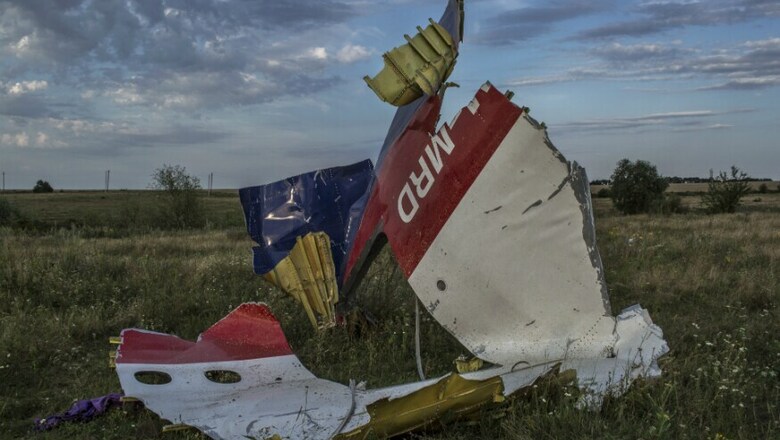
views
A Ukrainian airliner, a Boeing 737-800, went down in Iran on Wednesday morning, killing at least 176 people. American officials believe that the Iranians brought down the airliner by mistake, with two missiles fired from an Iranian air defense system, the SA-15.
Here are some of the most prominent passenger jets to be shot down — whether accidentally or, in some cases, deliberately:
July 17, 2014: Malaysia Airlines Flight 17
MH17 was flying from Amsterdam to Kuala Lumpur, Malaysia, when it was blown out of the sky over eastern Ukraine, killing 298 people. In June, an international investigative team charged four people, including three with ties to Russian intelligence.
Moscow has consistently denied any involvement in the disaster, but Western countries and experts have blamed Russian-backed separatists.
Oct. 4, 2001: Siberia Airlines Flight 1812
Seventy-eight people, most of them Russian émigrés to Israel, died when the flight from Tel Aviv to Novosibirsk exploded and plunged into the Black Sea off the Russian coast.
Four minutes earlier, two long-range anti-aircraft missiles were fired during a Ukrainian air defense exercise off the Black Sea’s Crimean coast. Ukraine’s president later said that he accepted investigators’ finding that his country’s military had accidentally destroyed the Russian airliner.
July 3, 1988: Iran Air Flight 655
A U.S. Navy warship in the Persian Gulf shot down an Iranian passenger plane that the Navy said it mistook for a jet fighter, killing all 290 people on board. The Iran Air Airbus A300 was flying over the Strait of Hormuz while the warship, the Vincennes, a 9,600-ton missile cruiser, was being engaged by Iranian gunboats.
The Americans, who were following radar readings, wrongly thought they saw a hostile F-14 jet fighter, and downed the plane with a surface-to-air missile.
Sept. 1, 1983: Korean Air Lines Flight 007
A Soviet fighter jet shot down KAL 007 after the airliner strayed off course and over Soviet territory, killing 269 passengers and crew members and prompting several theories.
The Soviet Union contended the jet was on a spying mission, which the United States denied. The United States, Japan and the Soviet Union searched the Sea of Okhotsk for the black box recorder but said they were unable to find it.
The episode evoked the Soviet downing of Korean Air Lines Flight 902 in 1978, which had a different fate: All but two passengers on that flight survived.
June 27, 1980: Itavia Flight 870
The crash of Itavia Flight 870, known as the Ustica affair, killed all 81 people aboard and produced legions of conspiracy theories in Italy. The airliner was entering the final leg of a routine trip from Bologna, Italy, to Palermo, Sicily, when it suddenly plunged into the Tyrrhenian Sea near the small island of Ustica.
In 2013, Italy’s highest court ruled that the government had to compensate the families of some of the victims, implicitly acknowledging the most widely accepted theory behind the crash: that a missile fired by a warplane had hit the twin-engine McDonnell Douglas DC-9. The court did not say where that missile came from.
Feb. 12, 1979 — Air Rhodesia Flight 827
In similar episodes, rebel forces in what was then Rhodesia, now Zimbabwe, brought down two aircraft within five minutes of their takeoff from Kariba.
Both were apparently hit by Soviet‐made, Strela heat‐seeking missiles. Altogether, more than 100 people died in the two attacks.
Feb. 21, 1973: Libyan Arab Airlines Flight 114
A Boeing 727-200 en route from Tripoli, Libya, to Cairo via Benghazi, Libya, was shot down by Israeli fighter aircraft over the Sinai Desert. Just five of the 113 passengers survived.
Israel said that the plane had flown over Israeli military concentrations along the Suez Canal and over a military airfield in Sinai, which was then occupied by Israel.
Aug. 24, 1938: The Kweilin Incident
Five Japanese military planes shot down a Chinese-American owned DC-2, known as Kweilin, soon after it had left Hong Kong for Chungking. China and Japan were at war at the time.
Fourteen people died; many of them had machine-gun wounds. The American pilot survived.
Ron DePasquale c.2020 The New York Times Company















Comments
0 comment